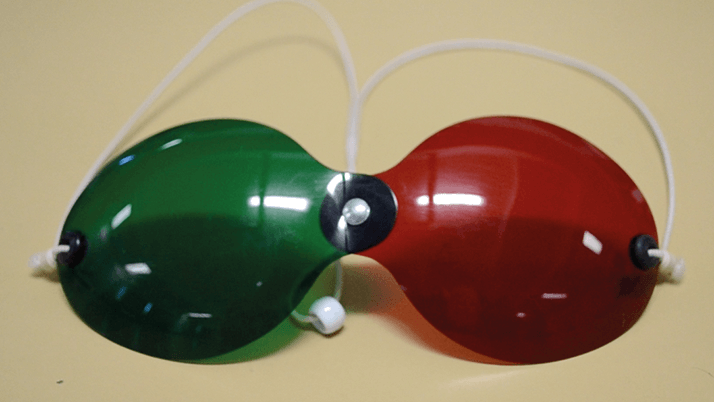
Three researchers from the Laboratory for Visual Neuroscience at the University of California, San Francisco, posed a question: how do people with strabismus locate visual targets? People with strabismus (and without amblyopia) have some element of binocular vision. Their brains still receive visual input from both eyes – and can make appropriate and accurate saccades to view the target. But which eye is the one that provides the brain with the information regarding the target’s location? Is it the one that acquires the target, or the other one?
To answer the question, they devised the following experiment (1). Sixteen subjects with alternating exotropia (and no amblyopia) wore red/blue filter glasses for dichoptic stimulation while viewing stimuli on a tangent screen. The trials began with a fixation cross that was visible to either the right or the left eye. Once the subject fixated the cross, a peripheral stimulus (a spot visible only to the right or the left eye) was displayed for 200 ms. The subject was simply told that they had to look at the spot – and as it is only visible for a fifth of a second, it will have disappeared before the eye arrived. To ensure the subject remained motivated, an audible tone was generated for saccades landing within a 5° window. In 10 out of the 16 subjects, purple spots were included on the display as peripheral stimuli, in order to establish which eye was used to fixate those targets that were potentially visible to either eye. The researchers went on to compile binocular sensory maps that delineated the portions of the visual field that each eye perceived, and assessed the subjects’ oculomotor behavior by randomly interleaving red, blue, and purple peripheral stimuli on
the display.
What they found was that there was a close match between suppression scotoma maps and the eye used to acquire the peripheral stimulus – or more simply put: the target was perceived via the eye that was used to fixate it.
References
- J.R. Economides, D.L. Adams, J.C. Horton, “How do patients with strabismus locate visual targets?”, Program No. 237.03/Z31, 2014. Neuroscience Meeting Planner, Washington DC: Society for Neuroscience, 2014.
